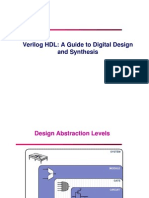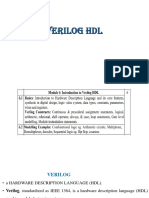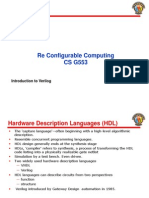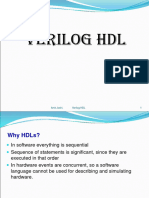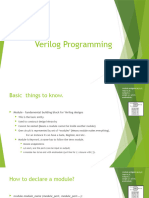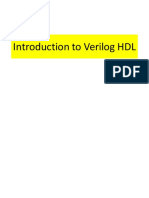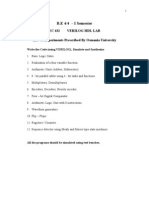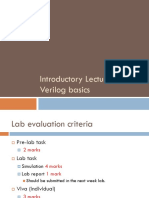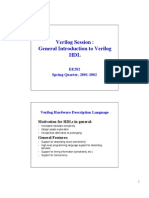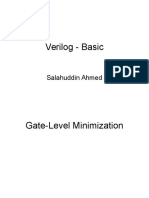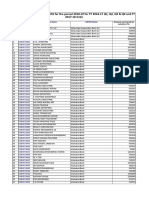0% found this document useful (0 votes)
32 views26 pagesVerilog - Introduction - 1
The document provides an introduction to Verilog HDL, a hardware description language used in VLSI design, highlighting its syntax similarities to C, case sensitivity, and various abstraction levels such as circuit, gate, data flow, and behavioral levels. It discusses the design flow, including simulation, synthesis, and functional verification, as well as the structure of Verilog modules, ports, and the use of wire and reg elements. Additionally, it covers test bench syntax and language constructs, including case sensitivity and number expression formats.
Uploaded by
cbjr0096Copyright
© © All Rights Reserved
We take content rights seriously. If you suspect this is your content, claim it here.
Available Formats
Download as PPTX, PDF, TXT or read online on Scribd
0% found this document useful (0 votes)
32 views26 pagesVerilog - Introduction - 1
The document provides an introduction to Verilog HDL, a hardware description language used in VLSI design, highlighting its syntax similarities to C, case sensitivity, and various abstraction levels such as circuit, gate, data flow, and behavioral levels. It discusses the design flow, including simulation, synthesis, and functional verification, as well as the structure of Verilog modules, ports, and the use of wire and reg elements. Additionally, it covers test bench syntax and language constructs, including case sensitivity and number expression formats.
Uploaded by
cbjr0096Copyright
© © All Rights Reserved
We take content rights seriously. If you suspect this is your content, claim it here.
Available Formats
Download as PPTX, PDF, TXT or read online on Scribd
/ 26










